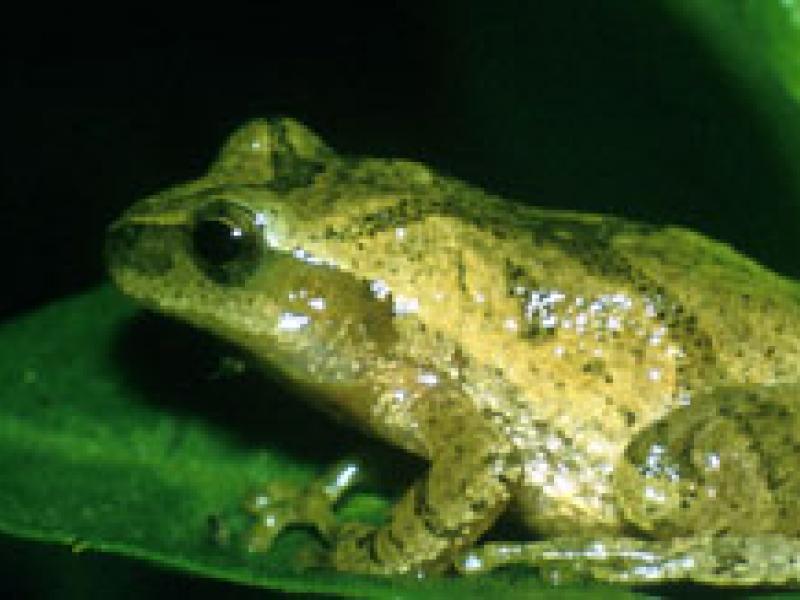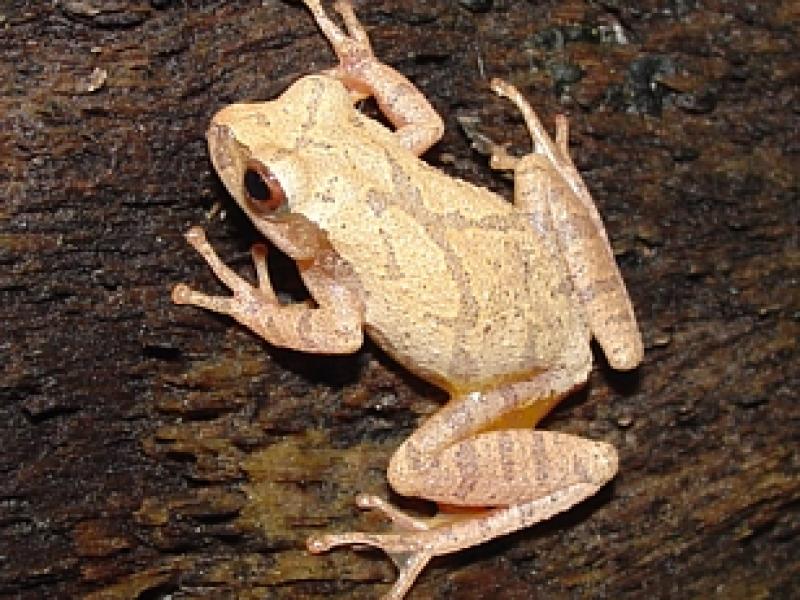Photo Credit: U.S. Fish and Wildlife Service | Photo Credit: Aubrey M. Heupel
SCIENTIFIC NAME:
Pseudacris crucifer crucifer
OTHER NAMES:
Spring peeper
STATUS:
Common statewide. Lowest Conservation Concern.
DESCRIPTION:
A small (3/4 to 1-¼ inch) frog with an overall coloration of tan or light brown. The most distinctive mark is a dark X located on the dorsum (back). The belly lacks any marks or is nearly plain. Toes end with enlarged toepads.
DISTRIBUTION:
Found statewide in suitable habitats. Outside of Alabama this frog is found in northwest Florida north to the Canadian maritime provinces, westward to southeastern Manitoba, and south to eastern Texas. The southern spring peeper (Pseudacris crucifer bartramiana) can be found in parts of southern Georgia and northern Florida. Southern spring peepers are similar in appearance but have strongly marked bellies.
HABITAT:
During the breeding season, found around permanent or temporary ponds particularly in or near wooded areas. Difficult to find outside of the breeding season, as they retreat to damp, wooded areas.
FEEDING HABITS:
As with all frogs, spring peepers will eat a variety of small invertebrates.
LIFE HISTORY AND ECOLOGY:
Despite the name “spring peeper” these frogs become active and can be heard singing as early as late November in the coastal counties of Alabama and as early as January or February in north Alabama. Breeding occurs from January to April in ponds, pools, and swamps in, or near, wooded areas. The species gets its common name from the high pitched whistle or “peep” produced by a singing male at a breeding site. Female spring peepers lay several hundred eggs attaching them to vegetation. Eggs hatch after approximately two weeks and tadpoles metamorphose approximately three months later. Though common statewide, spring peepers are subject to decline from polluted waters and the elimination of wetlands.
REFERENCES:
Ashton, R. E., Jr., and P. S. Ashton. 1988. Handbook of reptiles and amphibians of Florida. Part 3. The amphibians. Windward Publishing, Incorportated, Miami, FL. 191 pp.
Conant, R. C., and J. T. Collins. 1991. A field guide to reptiles and amphibians of eastern and central North America. 3rd ed. Houghton Mifflin Co., Boston, MA. 450 pp.
Mirarchi, R. E., ed. 2004. Alabama wildlife. Volume 1. A checklist of vertebrates and selected invertebrates: Aquatic mollusks, fishes, amphibians, reptiles, birds, and mammals. The University of Alabama Press, Tuscaloosa. 209 pp.
Mount, R. H. 1975. The reptiles and amphibians of Alabama. Ala. Agric. Expt. Stal, AuburnUniv., Auburn, AL. 347 pp.
Author: Roger Clay







